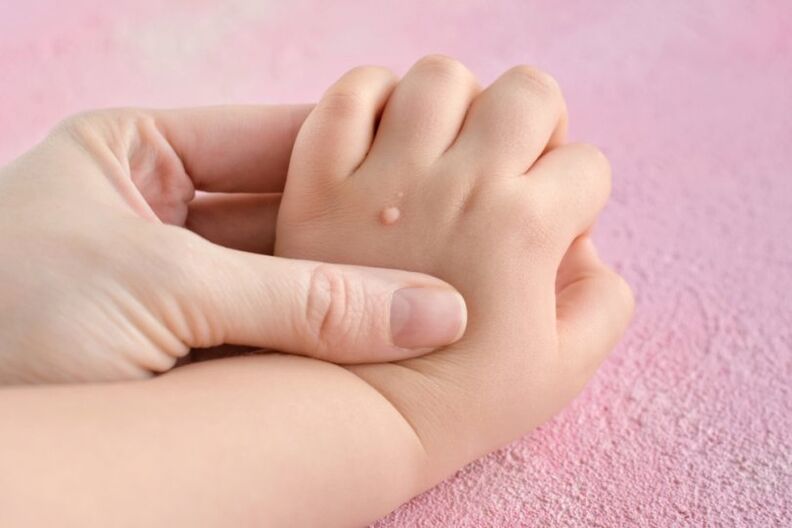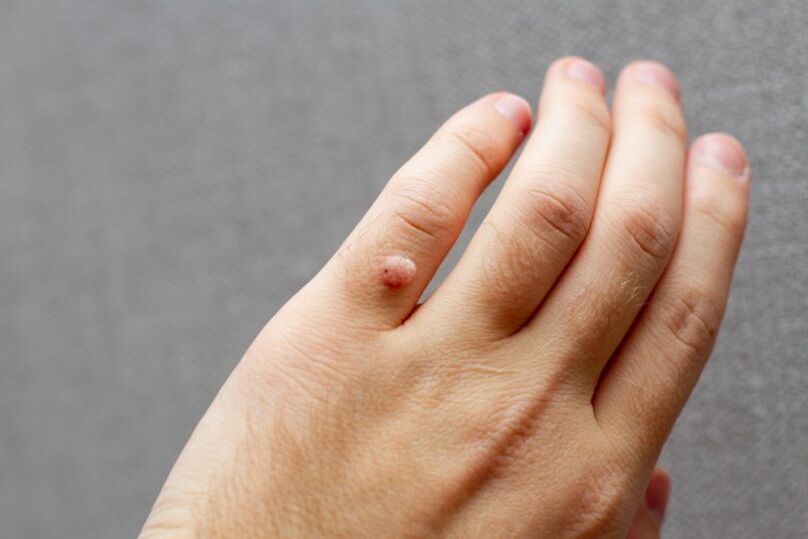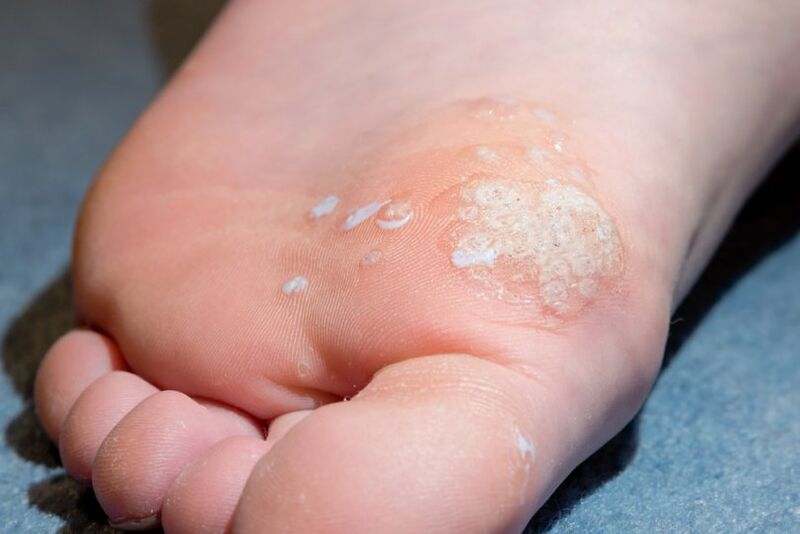A wart is a benign formation on the skin that looks like a rounded elevation, its cause is a large growth of the surface epithelium and papillary layer.
In most cases, the proliferation of cells caused by HPV is caused by external and internal factors - restlessness, a decrease in immunity, for some types - increased sweating of the extremities. You can get HPV through contact with carriers and objects. This is not the case with senile warts - their formation is not viral in nature.



The sizes of the formations vary on average from 1 to 15 mm (seniles reach 6 cm). They have an uneven surface, so they are easily contaminated, because of this, over time, they can change color from almost flesh to brown. Several units can group together when they are close. All warts can be removed. In some cases, the doctor may decide to observe without removal if the patient is comfortable.
When to see a doctor urgently:
- education is located on the genitals;
- in the area of the tumor appears itching, discharge;
- there is a heterogeneous color, spots;
- it changes shape and color;
- due to location is injured in daily life;
- you are not sure it is a wart.
Types of warts
There are 4 types:
- ordinary (simple) - formed on the hands (subgroup inside - plantar);
- flat - occur mainly in young people, so another name for flat warts is juvenile;
- warts - formed on the genitals, infection with HPV types that cause it;
- senile - causes are unclear, are not caused by HPV, develop in middle-aged and older people.
Common warts are 1-10 mm in size, dense, keratinized. The average life of such a formation is about 2 years, after which it disappears by itself. The most common location is the brushes.
Plantar warts are formations on the feet that at first look like a small callus, then there is a rough surface with black dots in its center and a small roll along the edge. Angular formations cause discomfort, because of them the patient experiences pain when walking. They can lead to loss of mobility and performance. Removing plantar warts significantly improves quality of life.
Flat warts have a clear border, small size - up to 5 mm, rise slightly above the surface of the skin by 1-2 mm. Any shape - round or uneven. Skin irritation, scratches, cuts can cause the appearance. Favorite places to place formations of this type are the face, hands and shins.
Genital warts are located on the genitals. They are treated by removal, and quite quickly, as they can acquire large sizes. Infection occurs sexually, the chances are higher if there are wounds in the groin. Condylomas are pink nodules that coalesce to form papillary growths that attach to the body on a stalk.
Senile warts (seborrheic keratosis) are the only ones listed that are not related to HPV. We can talk about a genetic predisposition due to frequent positive family history. Formations can reach quite large sizes - up to 4-6 cm (average size - 0. 2-3 cm). They spawn in groups of up to 20 units. The most common locations are chest, face, neck, forearms, hands.
At first the elements are flat and small, the surface is uneven. They are covered with crusts that are easy to remove. Then the crusts become denser, drier, covered with cracks. Over time, their thickness can be 1-2 cm. With age, they take the form of a mushroom cap, becoming dark, although they were originally pale yellow or pink. They contain impurities. Formations never turn into cancerous forms.
Wart removal
Wart treatment is chosen by the doctor on an individual basis, depending on its type, size, contraindications and other factors. The clinic offers 4 ways to remove warts, papillomas and condylomas:
- using radio waves;
- removal of CO2 by laser;
- freeze destruction;
- diathermocoagulation.
They are suitable for removing flat and raised warts. Unfortunately, none of the methods presented are able to eliminate HPV from the body, which makes the probability of recurrence 30%. Also, no method provides a 100% guarantee, an additional method may be necessary. After removal, scars may remain, the right choice of clinic and technique will help to avoid this. Experienced dermatologists in a professional clinic and high-quality equipment manufactured according to modern standards is a combination that provides high-quality service, pain-free and fast recovery. Infiltration and application anesthesia are available.
laser removal
The laser produces a high-energy beam of light, which causes a sharp rise in tissue temperature. The advantages of laser removal of papillomas and warts are the absence of bleeding, cysts, large scars. The procedure takes 5-7 minutes. As a rule, the images are eliminated the first time.
Removal of warts is carried out according to the following schedule:
- skin treatment with an antiseptic;
- treatment with anesthetics (injection or ointment);
- treatment of papilloma over the entire surface;
- treatment of the resulting wound and dressings.
Cryoablation
The treatment is carried out with liquid nitrogen. This method is used to remove many types of tumors and even in the treatment of tumors in internal organs, in diseases of the cervix, in liver operations. Under the influence of low temperature, the water inside the cells freezes, the cell bursts and dies.
Removal method:
- anesthesia (if it is large, it is located in an area with thin skin);
- exposure with a cotton swab soaked in liquid nitrogen (5-30 seconds depending on size);
- wait for 2 minutes. Test. If necessary, repeat the procedure.
The next day, a bubble appears on the skin, which gradually goes away. The task of the patient is not to damage the pimple in advance, to wash carefully, not to put a plaster on it, to protect it from external influences.
Diathermocoagulation
This treatment method involves tissue cauterization using high-frequency current, contact and non-contact methods. The operation is performed with the help of EKhVCh (high-frequency electrosurgical devices). The difference from the radio wave cutting knife "Surgitron" lies in the use of high frequency current - about 400 kHz (up to 4 MHz in the radio knife). The procedure enables bloodless coagulation of the skin and effectively deals with formations.
radio waves
As radio waves, when removing warts, Surgitron is used, which operates on radio waves with a frequency of 3. 8-4. 0 MHz. The wave vaporizes the cells it is directed at and does not affect neighbors. Often this method is used on the face, neck, genitals due to its sensitivity. The advantages are also high speed, anemia, minimal inflammation, rapid healing.
The operation is carried out as follows:
- the skin is treated with an antiseptic;
- anesthesia is administered (injections, creams);
- the doctor takes the waveguide of the desired shape and removes the tumor;
- antiseptic treatment.
Make an appointment with a dermatologist
The network of NEARMEDIC clinics offers several effective methods for removing flat, pointed, elderly, common, including plantar warts. An inexperienced person can confuse warts with other tumors that can turn into malignant forms - before starting treatment, it is necessary to contact a dermatologist.
In our clinic, experienced dermatologists, candidates and doctors of medical science, whom you can consult even in difficult cases, are involved in treatment. You will find the names, photos and biographies of all the experts along with the admission location on the website. Here you can make an appointment with a specific doctor.
Removing the visible manifestations of the problem is not enough to reduce the likelihood of relapse. For this, general treatment with antiviral drugs is used, which reduce the activity of the human papillomavirus. The doctor will perform a full analysis, develop a treatment plan, advise on all types of transfer and recommend the most effective in a given case. At the first sign of the disease, contact a specialist.
The cost of a doctor's visit and evacuation is shown in the table. Please note that it is cheaper to remove 2 to 5 or more than 5 formations. To make an appointment, please call or use the form on the website.















































































